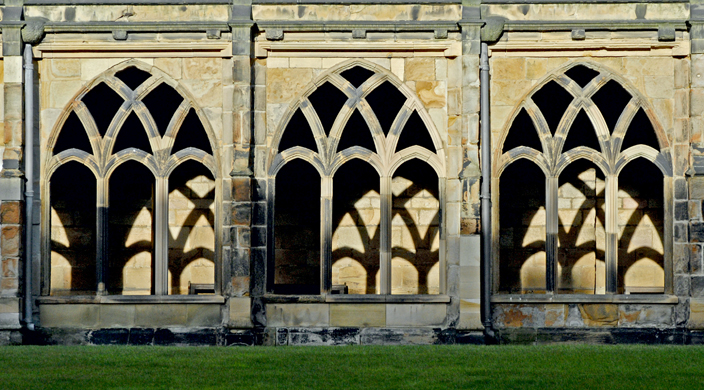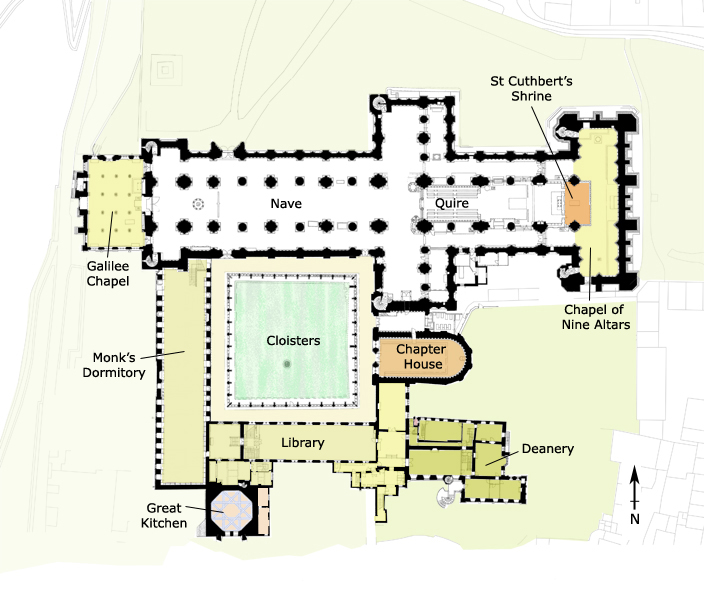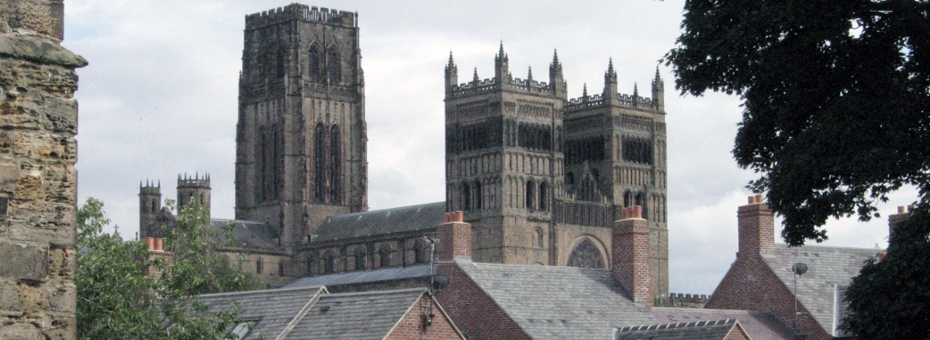Church & Chapels
The reason Durham Cathedral exists is to house the Shrine of St Cuthbert, which is at the east end of the church. From the exterior, the towers give Durham Cathedral its distinctive outline.
The main body of the Cathedral comprises the nave and the quire (or chancel). There are also several smaller chapels located around the edge of the Cathedral, including the Galilee Chapel, Durham Light Infantry Chapel and the Chapel of the Nine Altars.
Furnishings and Fittings
The Cathedral has a great deal of interesting and ornate woodwork dating back centuries, including the spectacular Prior Castel's Clock and a huge font cover. The Cathedral has played host to a number of organs over the years, and there are also a great number of beautiful stained glass windows.
The Neville Screen is a spectacular and beautiful Gothic sculpture. On the outside of the Cathedral, you will see the Sanctuary Knocker as you enter.

The cloisters, the place where Durham's monks would have studied.
© Jeffrey Veitch
Cloistral Buildings
Around the cloister are a number of rooms and buildings, each with their own story. The chapter house, despite extensive reconstruction, is probably home to the oldest stonework in the Cathedral. The spendiment houses some of the Cathedral's most valuable manuscripts. Other spaces include the Great Kitchen, monks' dormitory and Cathedral Library.
The College
The Cathedral Precinct is known as The College, and is home to many of the Cathedral's clergy and staff. Many of the buildings (which are now houses) once had a communal function, whilst others were (and, in some cases, still are) more utilitarian. The largest residence in The College is The Deanery, where the Dean of Durham lives.
Cathedral Plan


